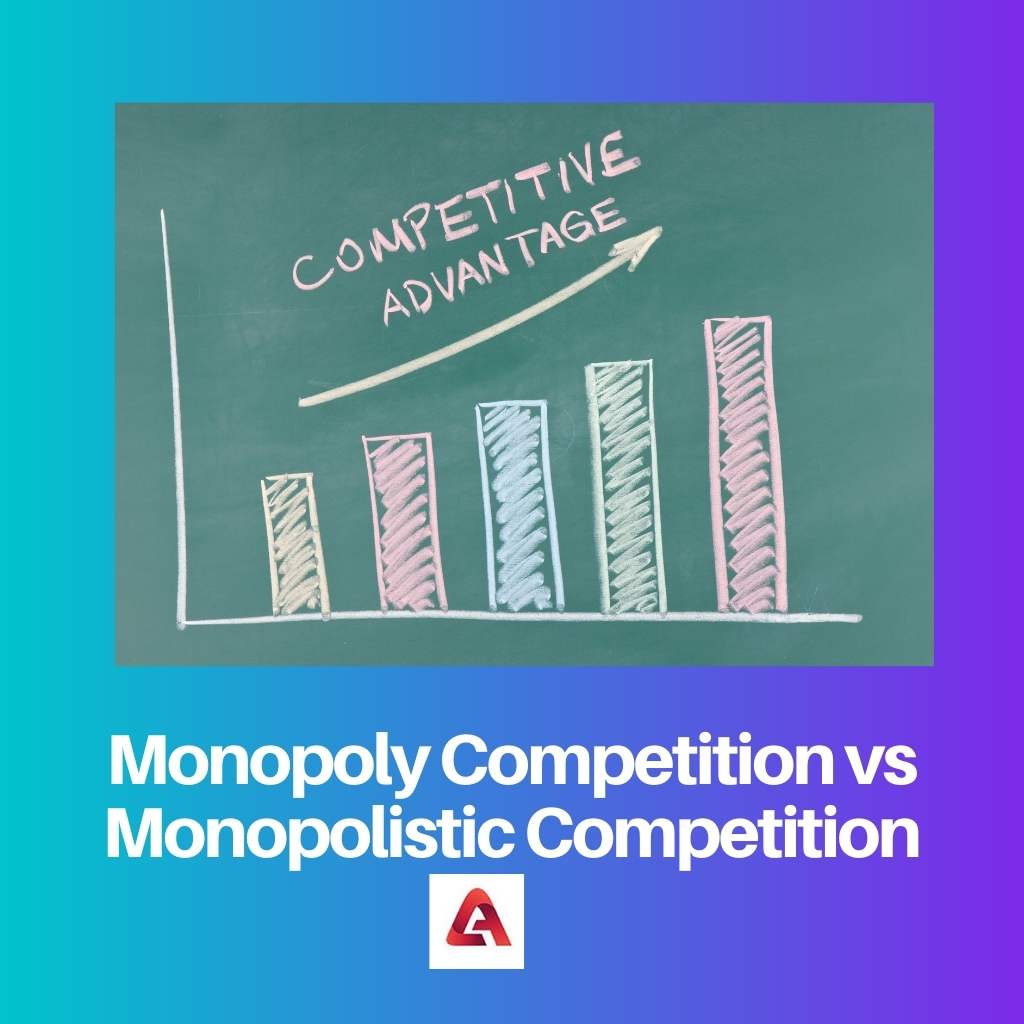In terms of market type, demand and supply chain, product diversity, pricing, ease of entry and exit from the market, predictability of the products, and so on, there is a distinction between monopoly and monopolistic competition.
Key Takeaways
- Monopoly is a market structure in which a single firm dominates and controls the product’s price.
- Monopolistic competition is a market structure in which many firms sell similar but slightly differentiated products.
- While monopoly and monopolistic competition involve market power, monopolistic competition allows for more competition and variety in the marketplace.
Monopoly Competition vs Monopolistic Competition
A monopoly exists when there is only one seller in a market, giving them complete control over the supply and price of the product or service they offer. Monopolistic competition exists when there are many firms in a market, each producing a slightly differentiated product. In this type of market, firms have some market power, but competition is still present.

There is no competition in a Monopoly type of competition since just one vendor sells or offers one specific product in the market. The market is dominated by a single player.
Monopolistic competition occurs when a single product is sold or offered by a large number of sellers in the market, resulting in significant market competition.
Comparison Table
| Parameters of Comparison | Monopoly Competition | Monopolistic Competition |
|---|---|---|
| Type of competition | No competition | Small competition |
| Type of Market | One-seller market | More than one seller is involved. |
| Demand and supply | It solely depends on the seller. | It can be controlled. |
| Predictability of product | Highly predictable | Highly unpredictable |
| Products Variety | Variants may/may not exist, depends on the seller. | Variants exist. |
| Pricing | Decided by the seller, buyers can’t interfere. | Decided by mutual interaction of sellers and buyers. |
| Entry and exit | Extremely difficult | Moderately easy |
What is Monopoly Competition?
There is no rivalry in a Monopoly type of competition because, in the market, only one specific product is sold or offered by a single vendor.
The vendor is the only one who sells the thing, just like in the market. Because there is no competition in a monopoly market, the sole seller has complete control over demand, supply, product kind and quantity, and price.
The demand and supply chain, however, is not the Seller side biassed due to the characteristics of the goods and commodities. It’s difficult to break into a monopoly market.
What is Monopolistic Competition?
Monopolistic competition occurs when a single product is sold or offered by a large number of sellers, resulting in significant market competition.
Small competition exists in the case of monopolistic competition. Despite the lack of rivalry, the level of competitiveness is insufficient to change or alter the general demographics.
Control over demand and the supply chain can be quickly regained under a Monopolistic kind of market completion. A monopolistic market is easier to enter and depart than a competitive market.
Main Differences Between Monopoly and Monopolistic Competition
- Entering into a monopoly type of market is challenging. So is the exit. On the other hand, both entry and exit from a monopolistic type of market are comparatively easier.
- In a monopoly type of market competition, the predictability of the products is highly predictable as only one seller is present. On the other hand, in a monopolistic type of market competition, any predictions on the products in highly unpredictable.





